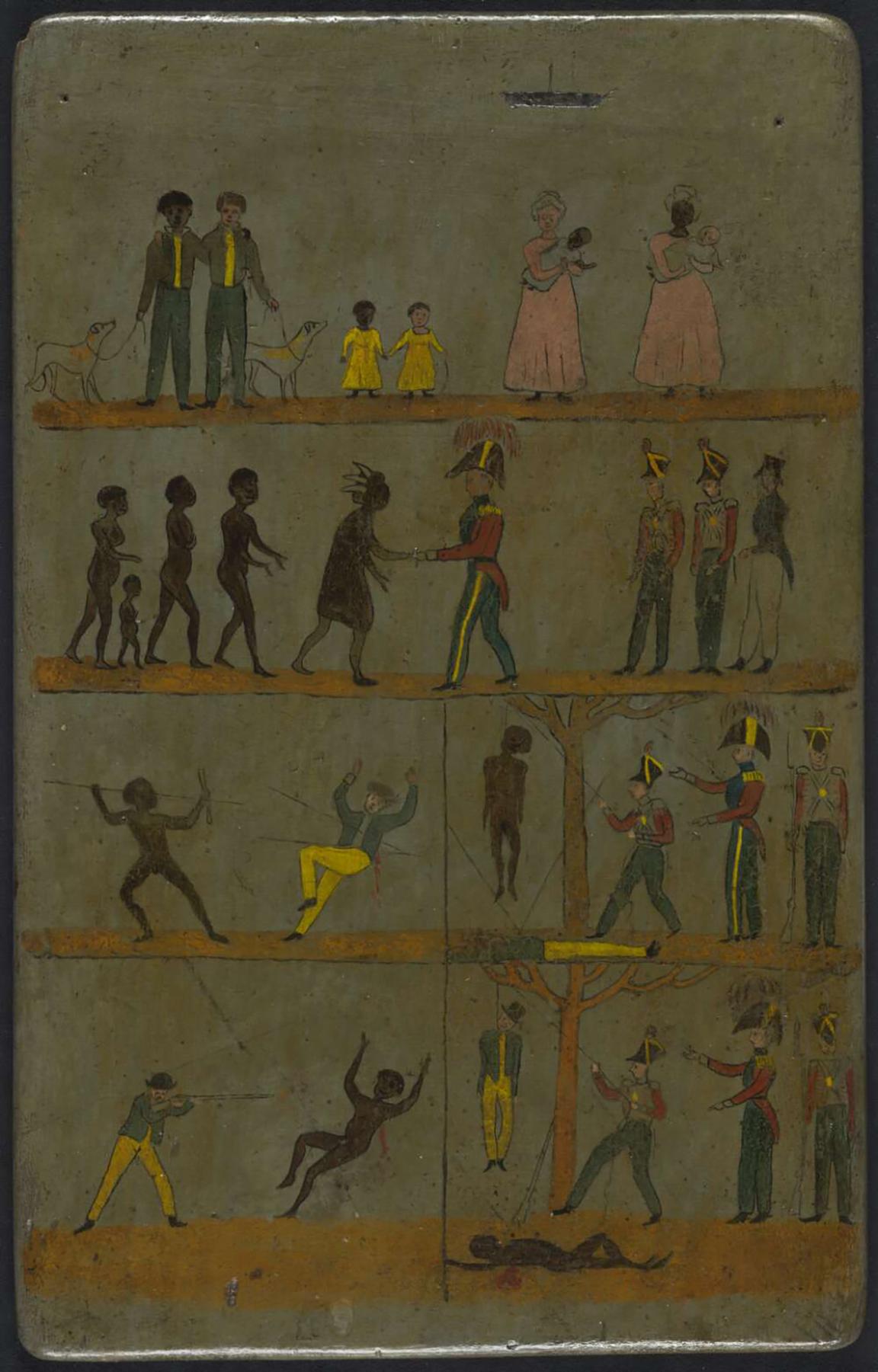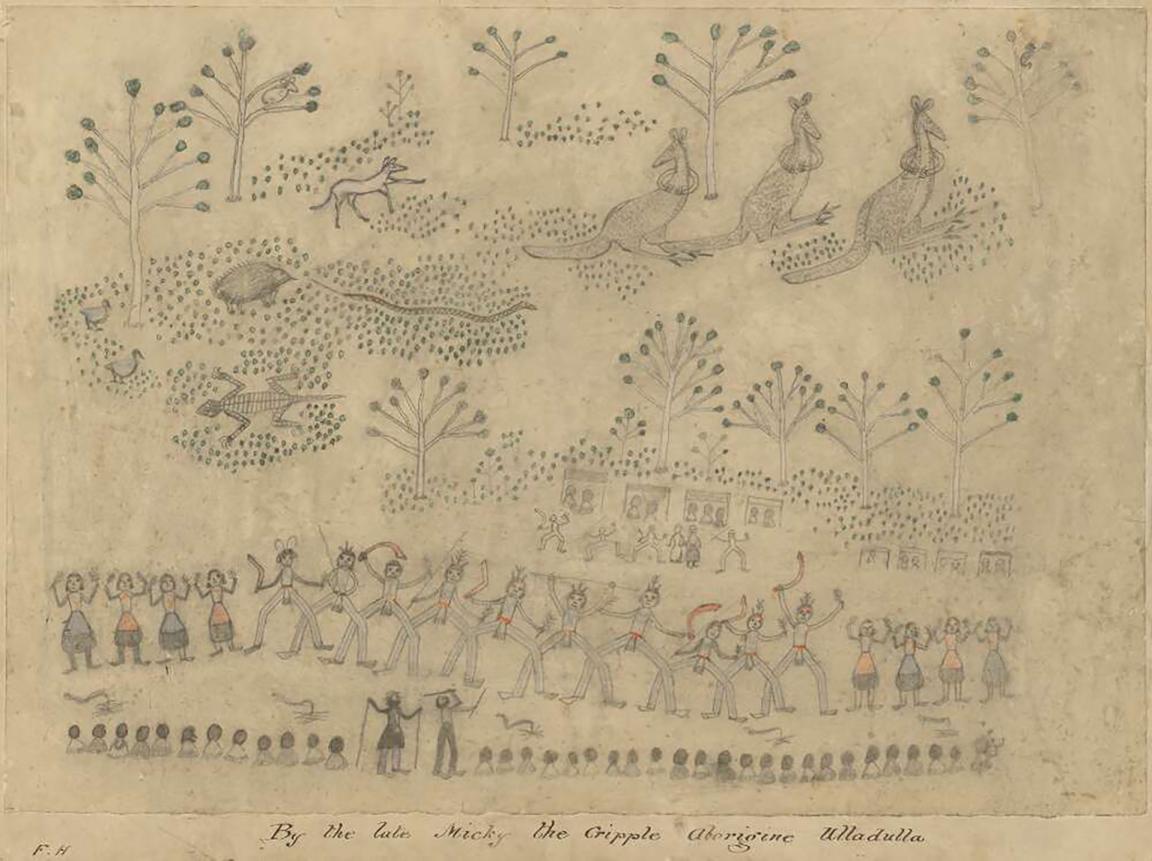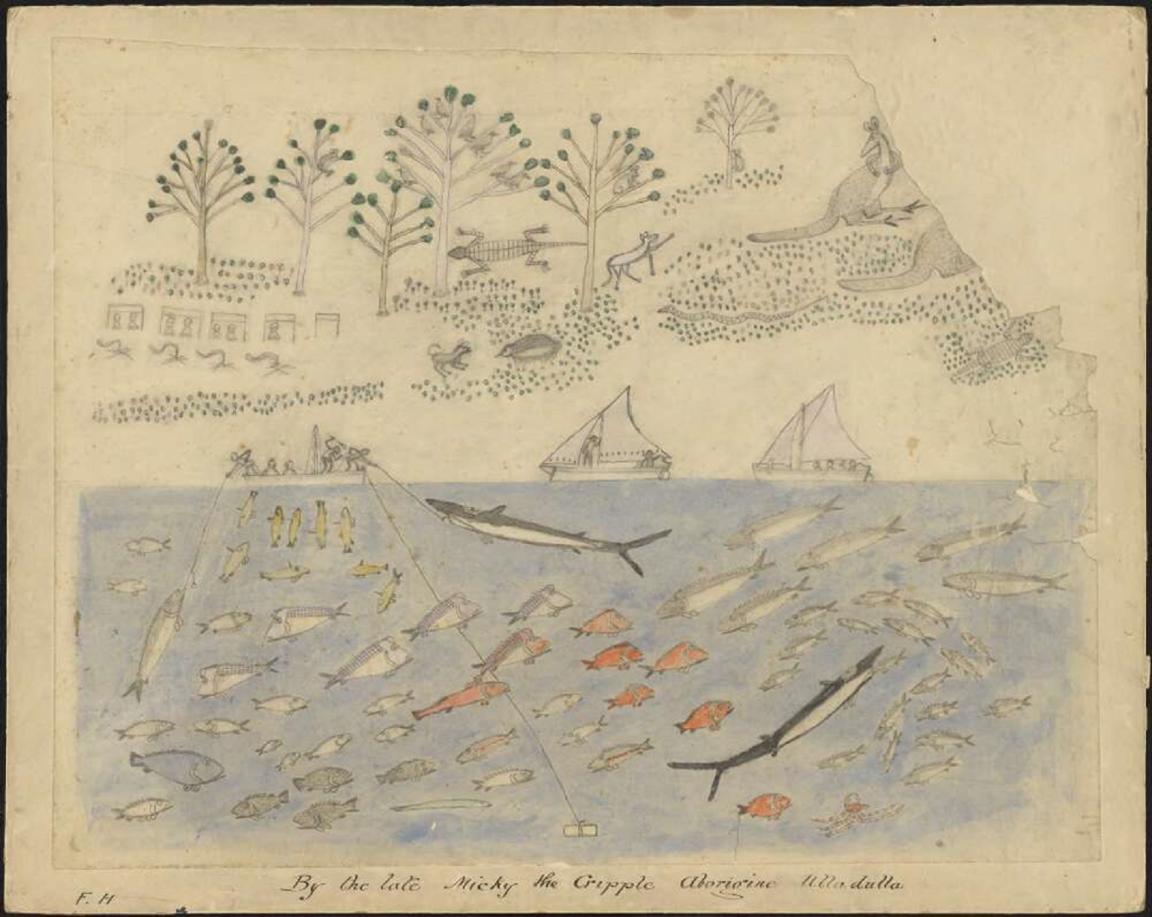Early communication
Proclamation board communication
In 1829, surveyor George Frankland observed that Aboriginal people in Van Diemen’s Land used pictograms (simple drawings) to communicate. This insight led to a unique attempt by the colonial government to bridge the gap between cultures amidst a backdrop of escalating tension and violence.

Governor Arthur's Proclamation to the Aborigines 1st Nov. 1828, 1828, nla.gov.au/nla.obj-138420046
Governor Arthur's Proclamation to the Aborigines 1st Nov. 1828, 1828, nla.gov.au/nla.obj-138420046
Activity 1: Analyse the proclamation board
Step 1: Class discussion
Begin by presenting the proclamation board to your students. Use the following questions to guide a class discussion:
- What is the message that this source conveys?
- When do you think the proclamation board might have been used?
- How might it have been used?
- Why might it have been used?
Conclude the discussion by providing context about the historical background. Explain how Lieutenant Governor George Arthur believed that using visual communication could help convey laws to the Aboriginal communities. However, the effectiveness of this approach remains uncertain.

Mickey of Ulladulla, Corroboree with native animals in the distance near Ulladulla, New South Wales, approximately 1885, 1880, nla.gov.au/nla.obj-135517021
Mickey of Ulladulla, Corroboree with native animals in the distance near Ulladulla, New South Wales, approximately 1885, 1880, nla.gov.au/nla.obj-135517021
Compare and interpret
Encourage students to think critically about how cultural perspectives can shape artistic representation and understanding.
Activity 2: Comparative analysis
Step 1: Visual comparison
Challenge your students to compare details from the proclamation board with a drawing by Aboriginal artist Mickey from Ulladulla (1820–1891).
Step 2: Group discussion
Prompt your students to discuss the following questions:
- What are the similarities between the ways Governor Arthur’s proclamation board and Mickey’s artwork depict male figures? What are the differences?
- How might these similarities and differences have influenced the way different groups interpreted the message on Governor Arthur’s proclamation?

Mickey of Ulladulla, Fishing activities of Aboriginal Australian people and settlers near Ulladulla, New South Wales, approximately 1885, 1880, nla.gov.au/nla.obj-135516869
Mickey of Ulladulla, Fishing activities of Aboriginal Australian people and settlers near Ulladulla, New South Wales, approximately 1885, 1880, nla.gov.au/nla.obj-135516869
Convey a message
This activity invites students to explore the principle of equality before the law by designing a poster for a contemporary Australian audience. Through visual elements, compelling wording, and thoughtful messaging, students will convey the importance of equal treatment under the law, considering how to make this message resonate with diverse communities today.
Activity 3: Design a contemporary poster
Step 1: Poster design
Challenge your students to design a poster aimed at a contemporary Australian audience that conveys the message of equality before the law for all Australians.
Step 2: Share ideas
Students should consider:
- Visual elements: What imagery will best represent equality?
- Textual messages: What words will convey the importance of this principle?
- Target audience: How can they make the message resonate with various groups in Australia today?



